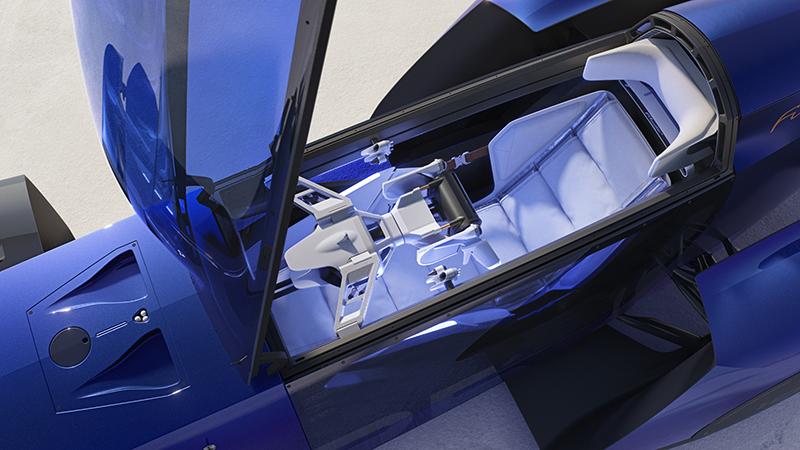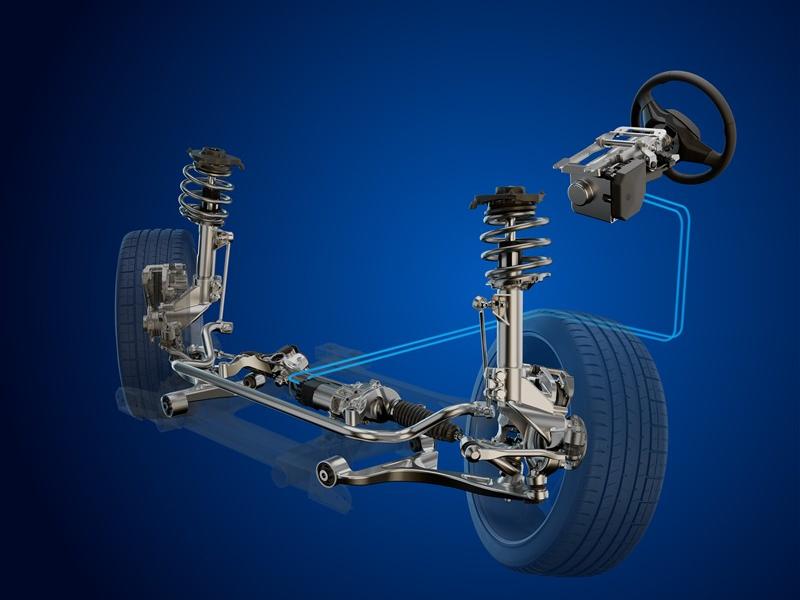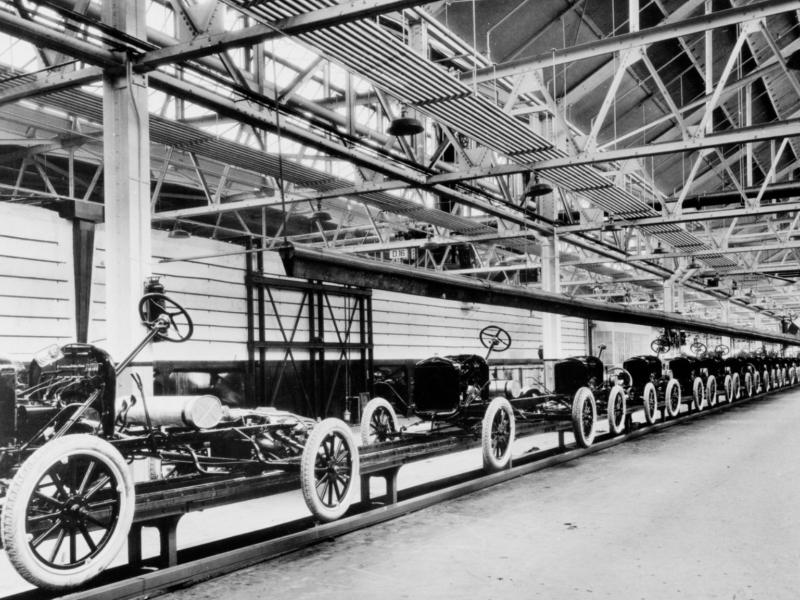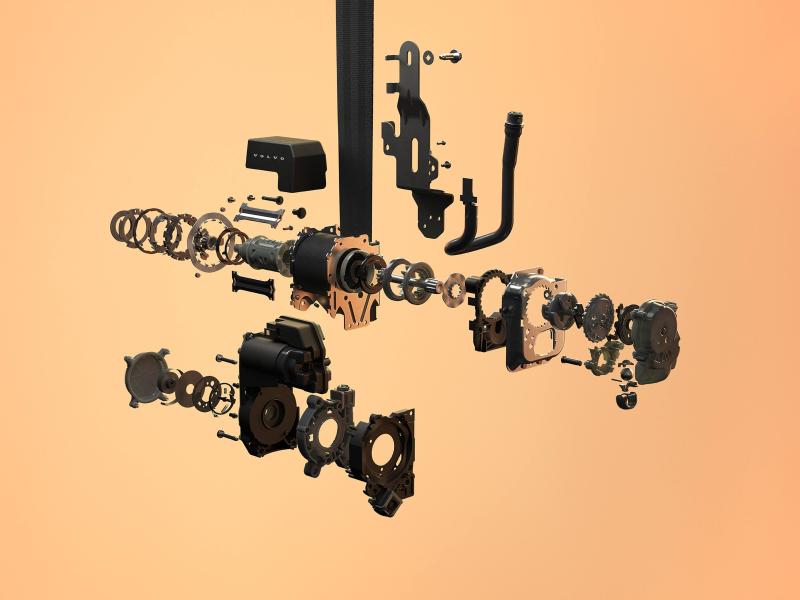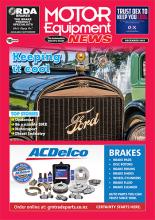Renault Filante Record 2025 is no ordinary concept car. It is an electric demo car, designed to be bold and innovative. It pays tribute to the history and heritage of the brand, which has always seen motorsports and records as a way to validate its innovations, before applying them to production models.
Inspired by the legendary 40 CV des Records (1925-1926), Nervasport des Records (1934) and Etoile Filante (1956), this single seater appears to be sculpted by air. It is not only an exercise in style, but also a demonstration of exceptional aerodynamic efficiency and cutting-edge technology.
A design pursuing new levels of efficiency, inspired by aeronautics
Renault Filante Record 2025 is a feat of engineering and design. Developed to push the limits of aerodynamics and energy efficiency, it is out to set new records. Its bold looks are inspired by aeronautical design cues and brand history.
The designers set out to create a monolithic sculpture of clean, flowing lines that could almost be described as organic.
“We designed this vehicle as a sculpture in motion. Inspired by fighter planes and the speed records of the nineteenth century, it reflects both performance and timeless elegance. Every inch of the surface was crafted to capture the light and showcase the body lines, which appear to melt into the air, The design as a whole seeks to convey an impression of flow and lightness.” Said Sandeep Bhambra, Director of Advanced Design, Renault and Ampere.
Historical influences revisited
Renault Filante Record 2025 features bodywork in Ultraviolet Blue, a new shade that looks blue or violet depending on the reflections of the light and the viewing angle. Reminiscent of the 40 CV des Records, this colour was recreated specially for Filante Record 2025.
However, it is the world of aeronautics that provides the main inspiration for the design of this demo car. With its protective aerodynamic bubble, the cabin brings to mind a fighter jet. At the same time, every detail of the bodywork has been optimised to reduce drag, with features that bring to mind the curves and shapes of high-performance aircraft.
The front and rear wheel fairings are another eye-catching detail, contributing to the style of the vehicle while playing a fundamental role in its aerodynamic performance.
In pursuit of efficiency and performance
Weight was also a priority in the design of Renault Filante Record 2025. This is clear in every detail, down to the finish. The visible screws on the bodywork are inspired by aircraft construction techniques. The purpose is not only to make the car lighter but also to give it a contemporary, high-tech look.
The design of this demo car is about much more than looks: it is part of an approach to push the limits of efficiency and performance. From the aerodynamic fairings to the lightweight chassis, every feature was designed to maximise energy efficiency. At the same time, the historic and aeronautical inspiration give this vehicle a unique personality, with its sights set squarely on the future.
A cockpit that was also designed for performance
The interior design of Filante Record 2025 takes the same approach as the exterior, with a cockpit inspired by the worlds of aviation and space travel, in which every detail is designed to maximise performance, comfort and efficiency. In this pared- down environment, each component or system (safety and opening functions, cruise control, accelerator, braking, etc.) is within easy reach of the driver.. The choice of materials also reflects this thinking. The driver’s seat, for example, is made from stretched canvas, similar in style to a hammock, for a lightweight design with optimum support.
The seat adapts to the body shape of the driver, who feels as one with the vehicle. The seat is supported by thin carbon blades clad in a technical textile, a choice again inspired by the aeronautics and aerospace industries, where every gram is important in maximising performance. The steering wheel is the visible component of an innovative control architecture: its handles control the acceleration, braking and steering functions using fully electronic steer-by-wire and brake-by-wire technologies, discreetly integrated into a 3D printed structure made of Scalmolloy. This approach is inspired by aeronautical technologies, where controls need to be both ergonomic and rapidly accessible. At the centre of the steering wheel, a flexible panoramic screen wrapped around a cylinder provides a clear and immediate display of essential data, such as speed, range and driving parameters. Finally, the steering wheel is attached to the protective bubble of the cockpit, rising upwards when it is opened to make it easier for the driver to get in and out.
An ingenious system of air circulation makes it possible to ventilate the cockpit without the need for more technical parts, again with a view to weight and energy savings.
The F1-inspired driving position is designed for ergonomics and visibility. The driver’s legs are positioned over the batteries, for a better architectural result.
Aerodynamics and weight control, the keys to energy efficiency
Based on a collaboration between engineering and design teams from Renault and Ligier Automotive, the Filante Record 2025 demo car features an exceptional ultra-aerodynamic design, optimised for performance.
The aerodynamics engineers sought to optimise the airflow around the car, with particular emphasis on the transition between the different parts of the vehicle. The elongated shape of the single-seater played a key role here, since longer vehicles allow better control of the aerodynamic flow, thereby reducing interference.
The wheels are normally major sources of aerodynamic interference, but they have been carefully faired here in order to minimise their impact on performance.
Simulation and validation in wind tunnels
While the aerodynamic development process has been guided to date by cutting-edge numerical simulations, engineers plan to carry out wind tunnel tests in spring 2025. These tests will serve to confirm simulation results and to make any adjustments necessary to perfect vehicle design for optimal aerodynamic performance.
Weight savings through optimised materials
One of the key goals in the development of Renault Filante Record 2025 was to make the vehicle lighter in order to maximise energy efficiency and therefore range. To this end, the project deployed an innovative combination of ultralight materials and advanced manufacturing techniques. Each component of the vehicle was studied, analysed and optimised to reduce weight while maintaining the solidity required to establish new records.
By maximising the use of carbon fibre, a material of key importance for reducing the weight of the chassis and body components without compromising their structural strength, the engineers were able to keep the weight of Renault Filante Record 2025 under 1,000 kilos while optimising stiffness and safety.
The chassis was optimised through detailed calculations and studies on possible combinations of materials. Aluminium, carbon and steel alloys were optimally combined in order to reduce component cross-sections to the minimum necessary to withstand mechanical stress while maintaining maximum strength.
To further reduce vehicle weight, the engineering team used Scalmalloy, a high- strength aluminium alloy specially designed for 3D printing. In this way, engineers were able to manufacture complex parts with extreme precision, while reducing the overall weight of the vehicle.
Topology optimisation: further improvements in performance
Topology optimisation is another key innovation that has significantly reduced vehicle weight. This method optimises the material layout in that material is used only where it is needed, i.e. in areas subject to specific mechanical stress. Using advanced computer calculations, engineers were able to establish the areas where material was required to ensure the strength of the demo car and the areas where it could be removed to make the structure lighter without impacting performance. Using simulation software enhanced by artificial intelligence, this approach made it possible to create lightweight, robust parts for use exactly where needed.
Renault Filante Record 2025, a laboratory on wheels for future vehicle technologies
The Renault Filante Record 2025 previews a range of technologies that will be studied for use on tomorrow’s production vehicles.
No mechanical connection between the driver and the braking and steering systems.
Renault Filante Record 2025 replaces the conventional mechanical systems with electronic steer-by-wire and brake-by-wire technologies, delivering a fuller driving experience while reducing the number of mechanical components. This frees up space to rethink vehicle architecture and optimise weight.
Steer-by-wire is a major step forward in steering control. Unlike conventional systems that use a mechanical steering column to connect the steering wheel to the wheels, steer-by-wire technology relies on an electronic link between the steering wheel and steering rack motors.
When the driver turns the wheel, the system sends electrical signals to a central ECU that determines the best way to turn the car, not just with the front wheels, but also with other components such as the engine, brakes and suspension. The entire platform can be put to work.
This technology also provides greater flexibility in that the steering components – including the steering wheel – can be positioned wherever required. This makes it possible to overcome a whole range of architectural and standardisation constraints in order to optimise the cockpit layout.
Brake-by-wire technology operates on a similar principle. Renault Filante Record 2025 does not have a conventional pedal assembly. Instead, braking effort is managed by an electronic control system. When the driver activates the brakes, an electrical signal is sent to the braking system, which distributes the force applied to the wheels for optimum effect.
Optimised battery integration using cell-to- pack technology
Supplied by Ampere, cell-to-pack technology maximises the energy efficiency of the vehicle while delivering space and weight savings.
The cells are integrated directly into the battery pack without intermediate modules. This technique reduces the weight of the battery pack while also optimising its form factor and the available space. This was a major challenge for Renault Filante Record 2025, which is just 1.71 metres wide.
This new architecture also brought down the overall weight of the vehicle to 1,000kg with a battery of 600 kg. The carbon battery casing also contributes to weight savings, while providing increased strength and protection.
Innovative tyres
Renault Filante Record 2025 is fitted with 19-inch Michelin tyres specially designed to deliver pure performance, while also maximising range. Tyres influence range by around 20%, and therefore play a key role in this type of project. The engineers at Michelin’s technology centre worked on a number of parameters:
• Materials to reduce tyre-related energy dissipation.
• Architecture to better flatten the contact patch.
• Tyre design: a slimline shape, i.e. high and narrow, has the twofold advantage of limiting energy dissipation with each turn of the wheel, while also making a positive contribution to vehicle aerodynamics.
In this quest for efficiency, these tyres once again push back the limits of rolling resistance. Their coefficient is almost 40% lower, at around 4 kg/tonne in conditions of vehicle use, compared with around 6.5 kg/tonne for a conventional vehicle tyre.


